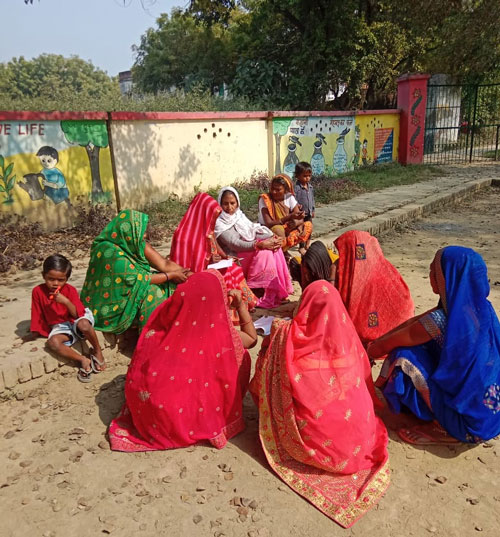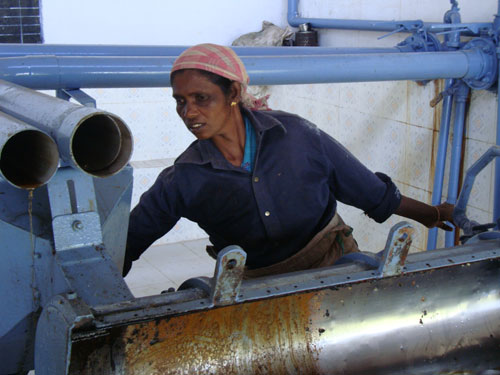
Livelihood
 Livelihood in India is a multifaceted and dynamic concept encompassing various means by which individuals and communities earn their living. It is closely linked to economic activities, employment, and overall well-being. Here are key aspects related to livelihood in India:
Livelihood in India is a multifaceted and dynamic concept encompassing various means by which individuals and communities earn their living. It is closely linked to economic activities, employment, and overall well-being. Here are key aspects related to livelihood in India:
Agriculture:
Agriculture is a major source of livelihood for a significant portion of the Indian population. Small-scale farming, subsistence farming, and commercial agriculture contribute to the livelihoods of millions. Efforts to improve agricultural productivity and sustainability are essential for enhancing livelihoods in rural areas.
Rural Livelihoods:
In rural areas, livelihoods often revolve around agriculture, animal husbandry, and cottage industries. Government schemes and initiatives, such as the National Rural Employment Guarantee Act (NREGA), aim to provide rural households with employment opportunities and improve overall livelihoods.
Urban Employment:
Urban areas provide diverse employment opportunities in sectors such as manufacturing, services, and information technology. The growth of urbanization has led to increased migration from rural to urban areas in search of better livelihood prospects.
Informal Sector:
The informal sector plays a crucial role in providing livelihoods, especially in urban areas. Street vendors, small businesses, and unorganized labor contribute significantly to the economy. Efforts to formalize and improve conditions in the informal sector are essential for enhancing livelihoods.
Skill Development:
Skill development initiatives aim to empower individuals with the skills necessary to secure sustainable livelihoods. Vocational training programs and skill development schemes help bridge the gap between education and employment, especially in sectors like manufacturing and services.
Entrepreneurship:
Encouraging entrepreneurship is crucial for creating job opportunities and fostering economic growth. Government programs like Start-Up India promote entrepreneurship, innovation, and the establishment of small and medium-sized enterprises (SMEs).
Women’s Livelihoods:
Women’s participation in the workforce is vital for inclusive development. Livelihood programs that focus on women’s empowerment, skill-building, and access to credit contribute to gender equality and improved household incomes.
Social Enterprises:
Social enterprises aim to address social and environmental challenges while providing sustainable livelihoods. These enterprises often operate in sectors such as renewable energy, handicrafts, and sustainable agriculture.
Government Initiatives:
Various government initiatives, such as Make in India, Skill India, and Pradhan Mantri Mudra Yojana, focus on boosting employment, entrepreneurship, and livelihood opportunities across different sectors.
Technology and Livelihoods:
The integration of technology, such as digital platforms and e-commerce, has transformed the landscape of livelihoods in India. Access to technology can enhance market linkages, financial inclusion, and skill development.
Environmental Sustainability:
Livelihoods are closely linked to natural resources. Sustainable practices, conservation, and responsible resource management are critical for ensuring that livelihoods are not only economically viable but also environmentally sustainable.
Addressing challenges related to livelihoods in India requires a holistic approach that encompasses economic, social, and environmental dimensions. Sustainable and inclusive development strategies, coupled with targeted interventions, can contribute to improving the livelihoods of diverse communities across the country.
 Our Interventions:
Our Interventions:
Within the space of livelihood support, I-Catalysts focuses on integrated approach and interventions are largely on rural livelihood, informal sector workforce, skill building and women’s livelihood.
Promotion of community institutions and their capacity building is one of the core components of I-Catalysts engagement. The community institutions provide a collective platform for the rural poor to overcome poverty through access to financial, technical, and marketing resources. These institutions require continuous and intensive capacity building and training.
Forming SHGs and thereafter, SHG Federations at the levels of village and cluster of villages is the second important feature of our work. At the village level, we seek to promote a primary federation of SHGs, known as the Village Organizations (VOs). All the village organizations located in a cluster, are then federated into cluster level federations (CLFs).
We seek to promote financial and governance linkages among the SHGs and their federations. Thus, SHGs are organically linked to the VOs and VOs to cluster federations. As part of institution development, we strive to introduce and strengthen systems of democratic governance, transparent financial management and accountability systems.
